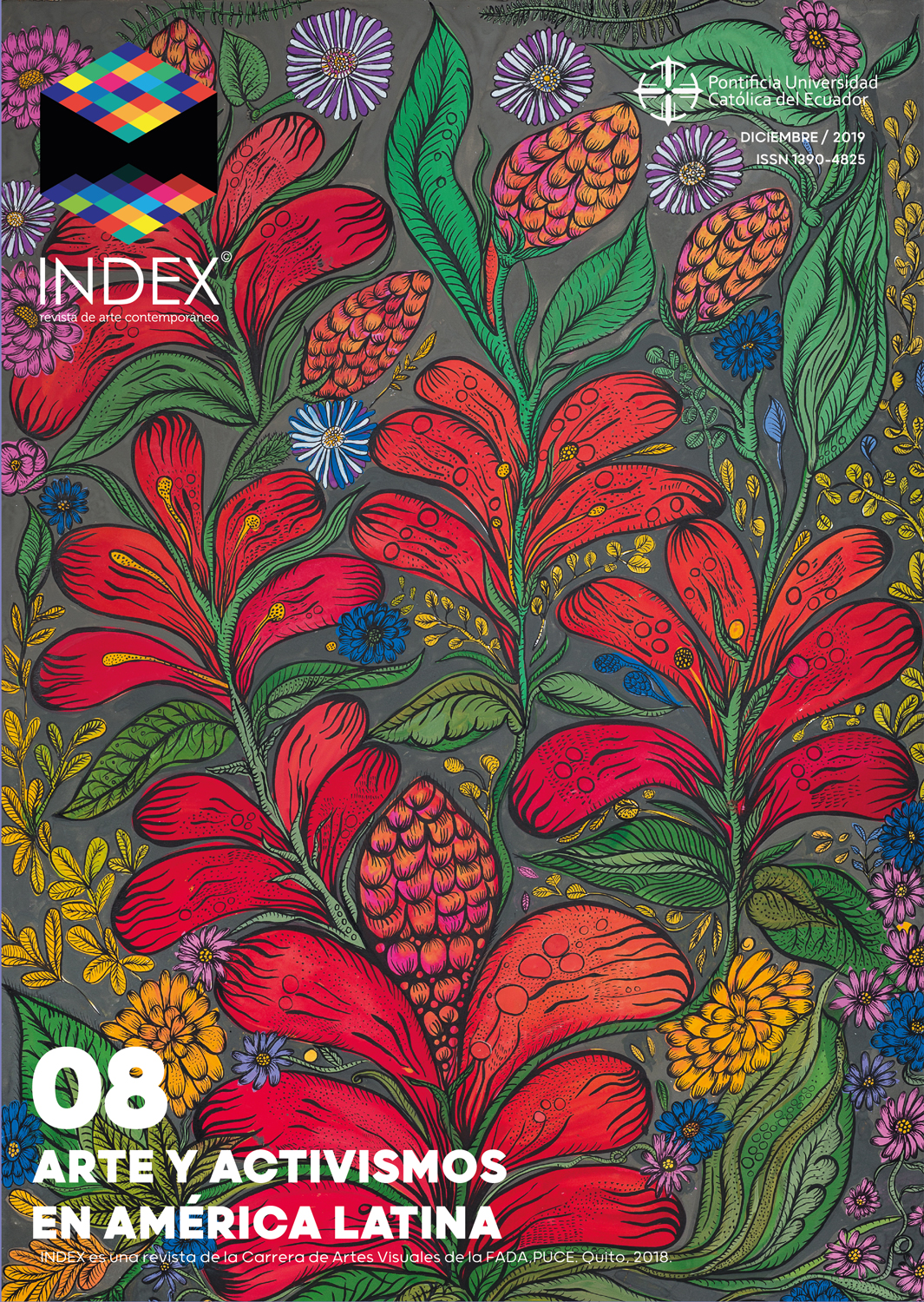Alternative photography methods as a contribution to the work of emerging artists
Main Article Content
Abstract
Teaching alternative photographic printing methods made me rethink my practice as a teacher: the need for art students to learn new techniques that allow them to find a practical component to conclude with their degree exhibition proposals within their theoretical research. This exploration is since these techniques have not been explored in an extended way since they have ceased to be part of a formal teaching curriculum. Before I started teaching alternative processes in itinerant workshops, there was a need to find new ways to suggest artistic creation within the expanded field of contemporary photography which involves discovering techniques that increase their conceptual applications.
Downloads
Article Details
Index, revista de arte contemporáneo maneja sus derechos bajo licencia Creative Commons Reconocimiento-NoComercial 4.0. En ese sentido los envíos quedan sujetos a la decisión del autor.
References
[Fotografía de Carolina Calero] ( 2019). Cianotipia contemporánea de un retrato de 1947. Quito, Ecuador.
Cotton, C. (2015). Photography is Magic, New York. Aperture.
Chemigram Workshop, 2018. Descargado de https://www.ilfordphoto.com/chemigrams/
De Neufville, F. (2019). Teratos [Fotografía]. Recuperado de Flora De Neufville,
Guixá, R. (2005). Nacimiento de la fotografía en su contexto epistemológico. Por una teroría de la fotografía como conocimiento. Descargado de https://www.researchgate.net/publication/267212714_Nacimiento_de_la_fotografia_en_su_contexto_epistemologico_Por_una_teroria_de_la_fotografia_como_conocimiento?enrichId=rgreq-56b875012518ca9b096ca282b8988377-XXX&enrichSource=Y292ZXJQYWdlOzI2NzIxMjcxNDtBUz
King, M. (2016). Planet Earth, Cyanotype [Fotografía]. Recuperado de Melanie King.
King, M. (2018) Cosmic Perspectives. Konesh Space 1. Recuperado desde: https://www.konesh.space/home/cosmic-perspectives
Más Arte Galería Taller (2019). Taller de Chemigram Quito [Fotografía]. Recuperado de Más Arte Galería Taller.
Rivadeneira, G. (Ed.) (2018). Metodologías de enseñanza para las artes. Guayaquil: UArtes Ediciones.
Vega, B. (2016). Mimetic Performance, de la serie Performative self-technology [Fotografía]. Elaboración propia.
Vega, B. (2018). La sociedad aparente de Minnie Mouse [Fotografía]. Elaboración propia.
Viteri, A. (2019). ¿Y por qué? [Fotografía]. Recuperado de Ana Viteri.

